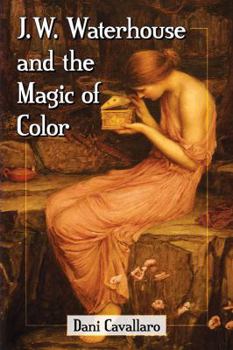J.W. Waterhouse and the Magic of Color
English painter John William Waterhouse (1849-1917) communicates his aesthetic vision through his use of color. Throughout his career, he experimented with color as an element with seemingly spatial qualities. His works have an unusual formalism--figures and settings often appear not merely realistic but somewhat hyperreal. Yet paradoxically Waterhouse's works border on the abstract, prioritizing chromatic features over content. They invite us...
Format:Paperback
Language:English
ISBN:1476667098
ISBN13:9781476667096
Release Date:March 2017
Publisher:McFarland & Company
Length:220 Pages
Weight:0.70 lbs.
Dimensions:0.6" x 6.0" x 9.0"
Age Range:18 years and up
Grade Range:Postsecondary and higher
Customer Reviews
0 rating





